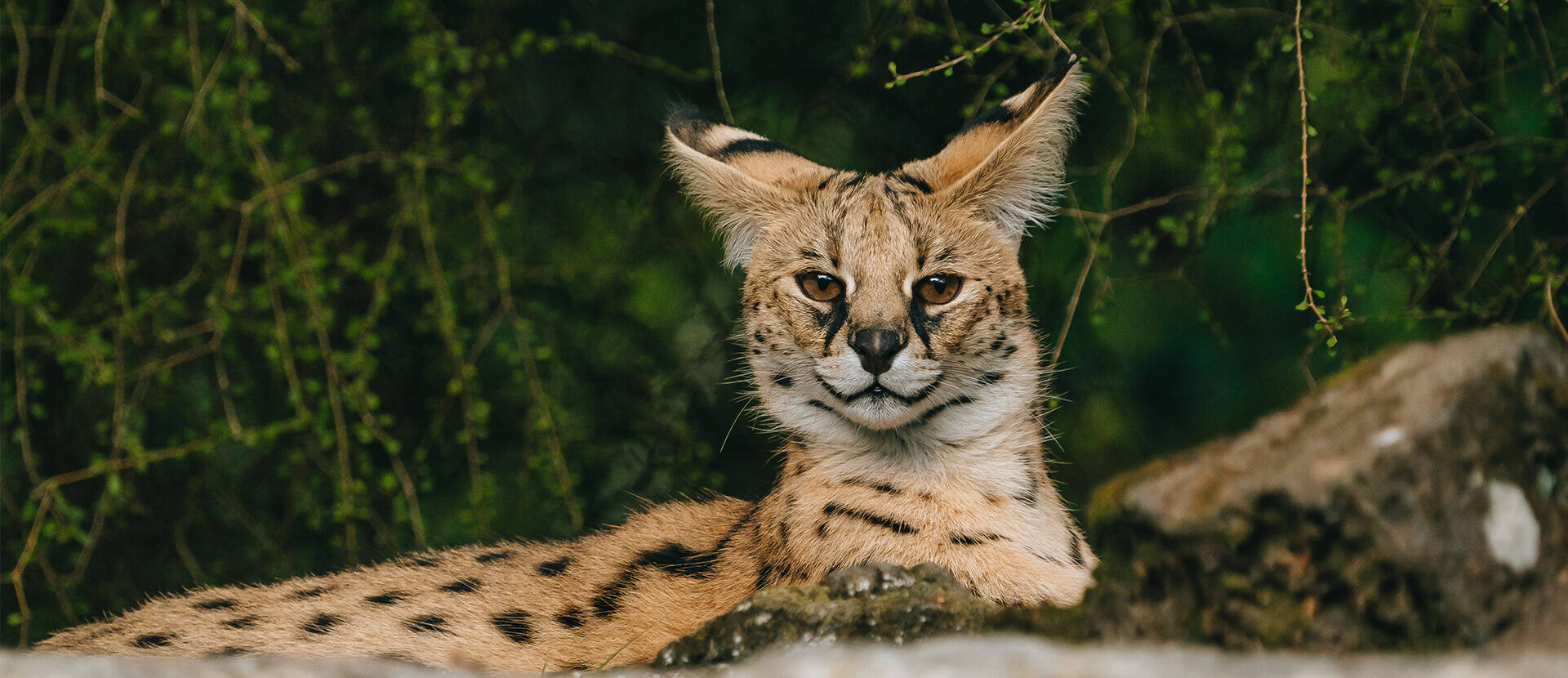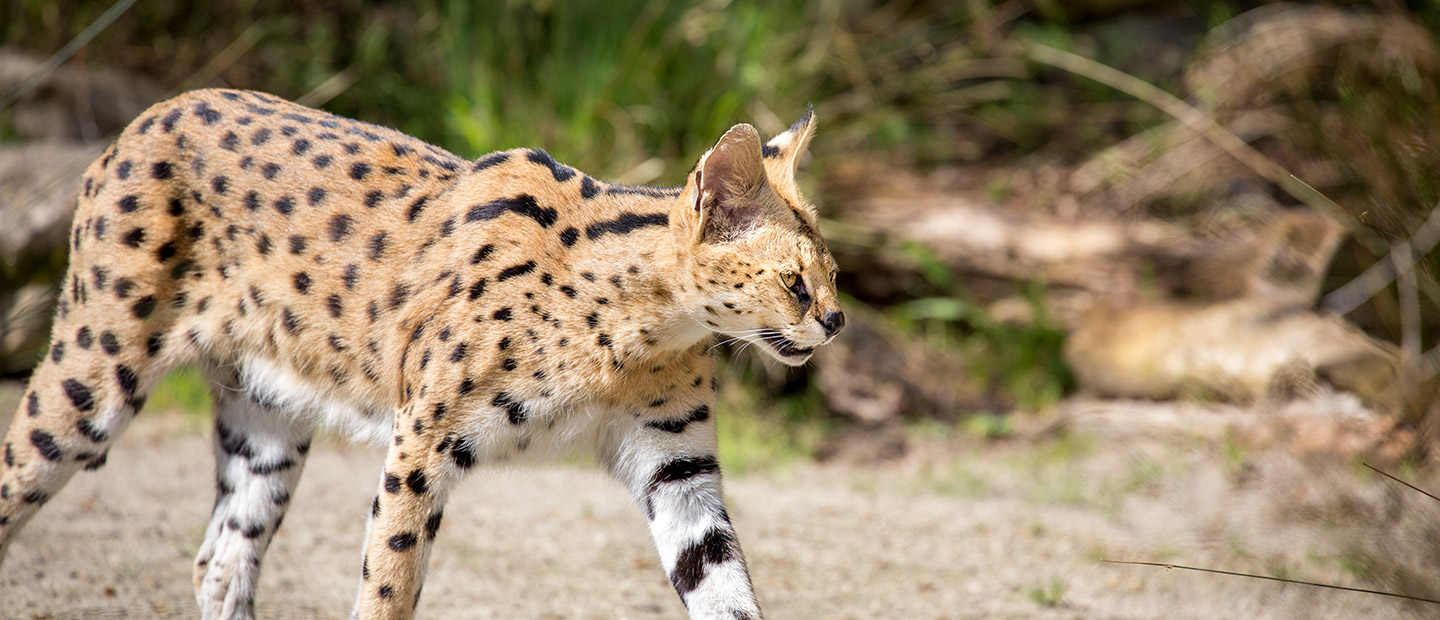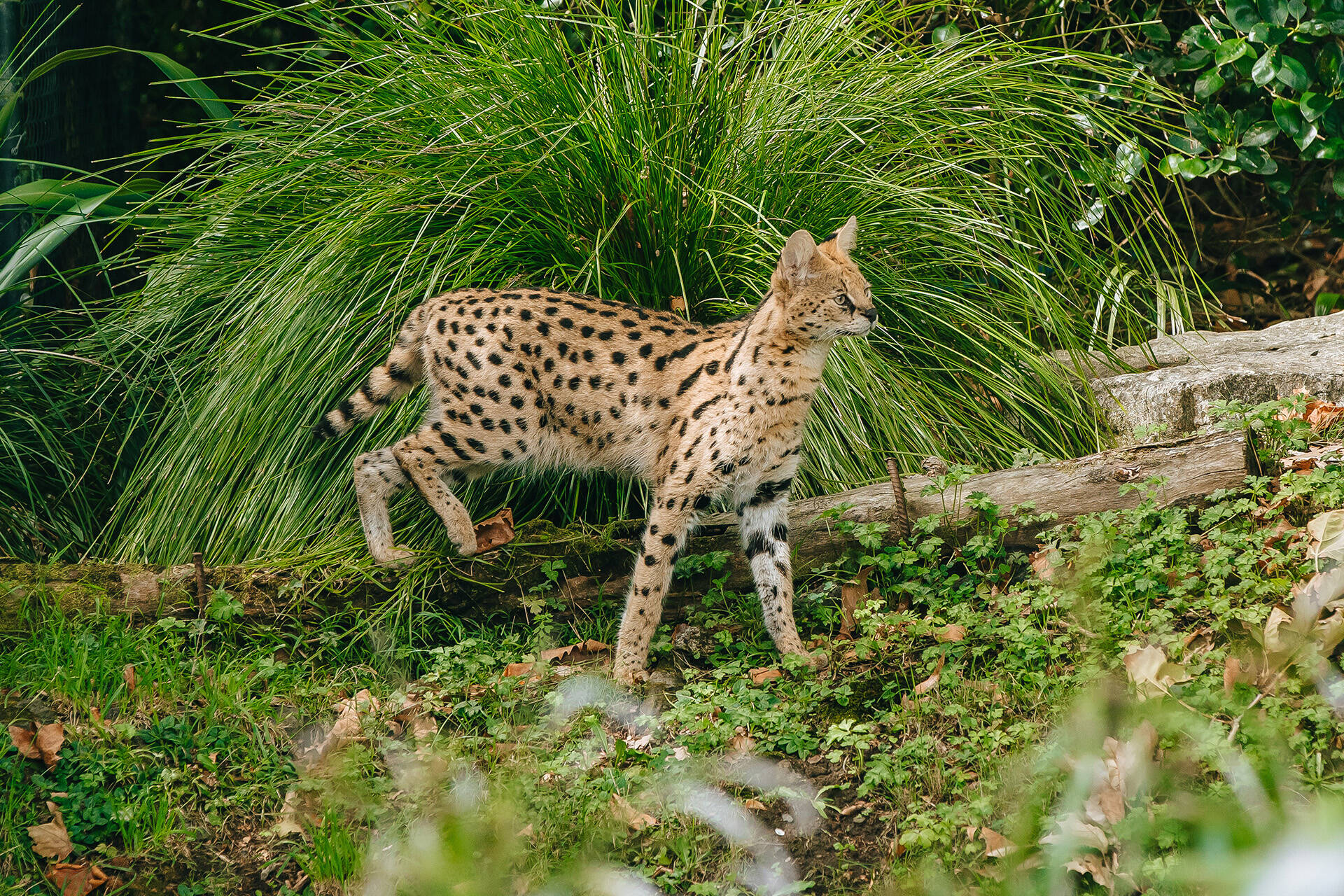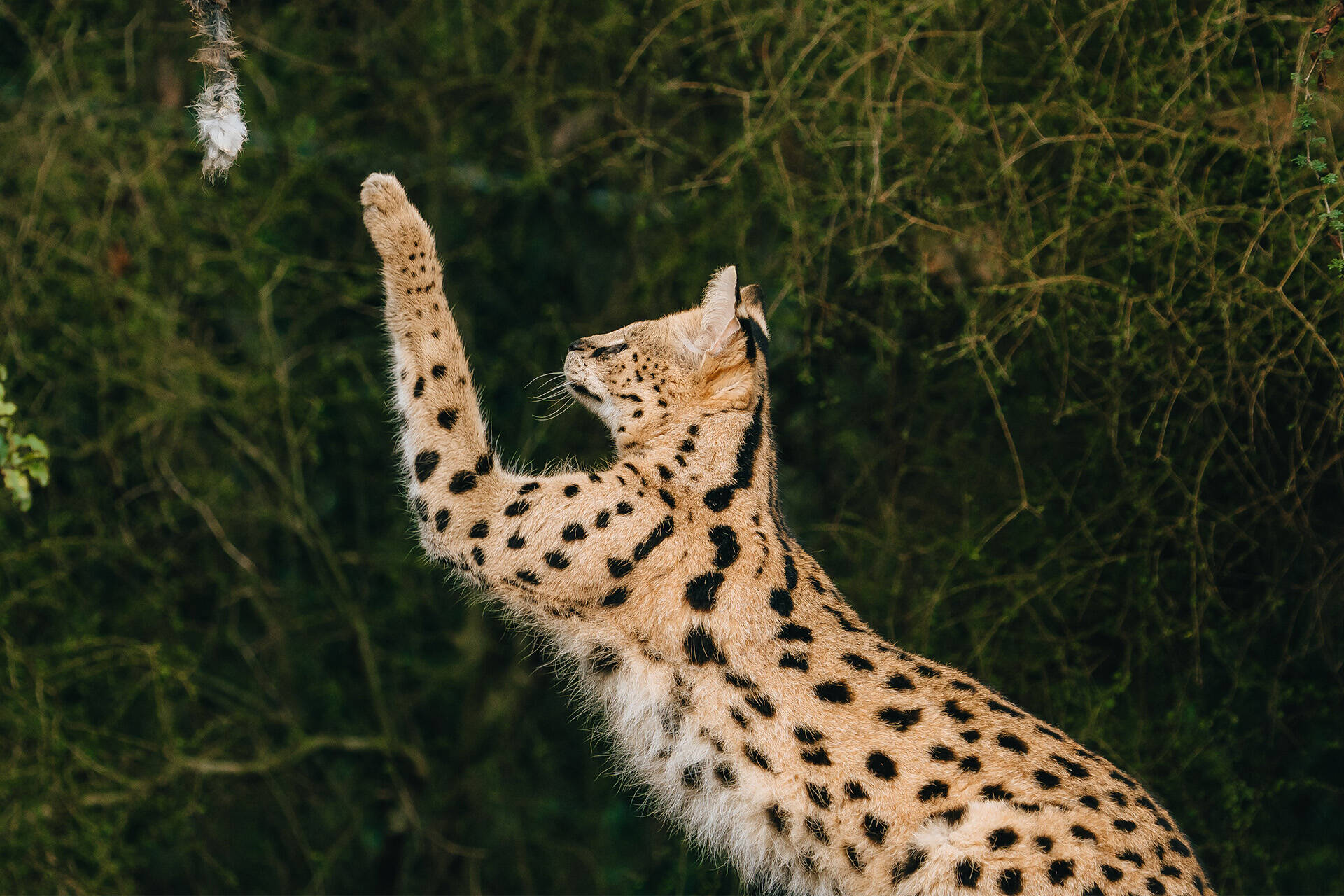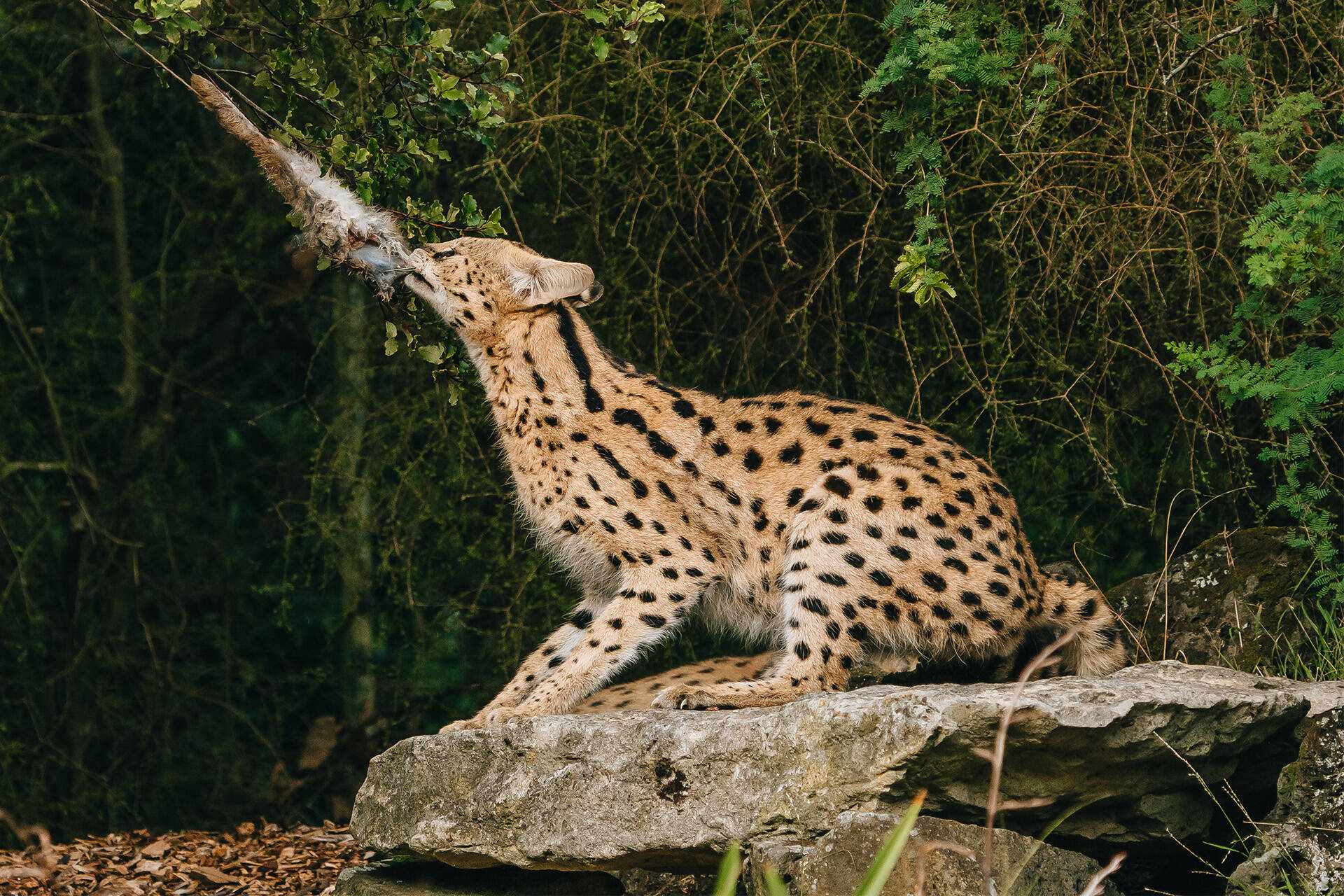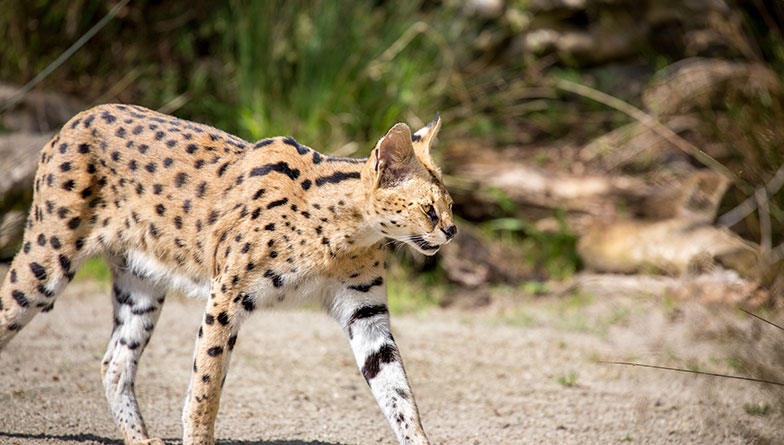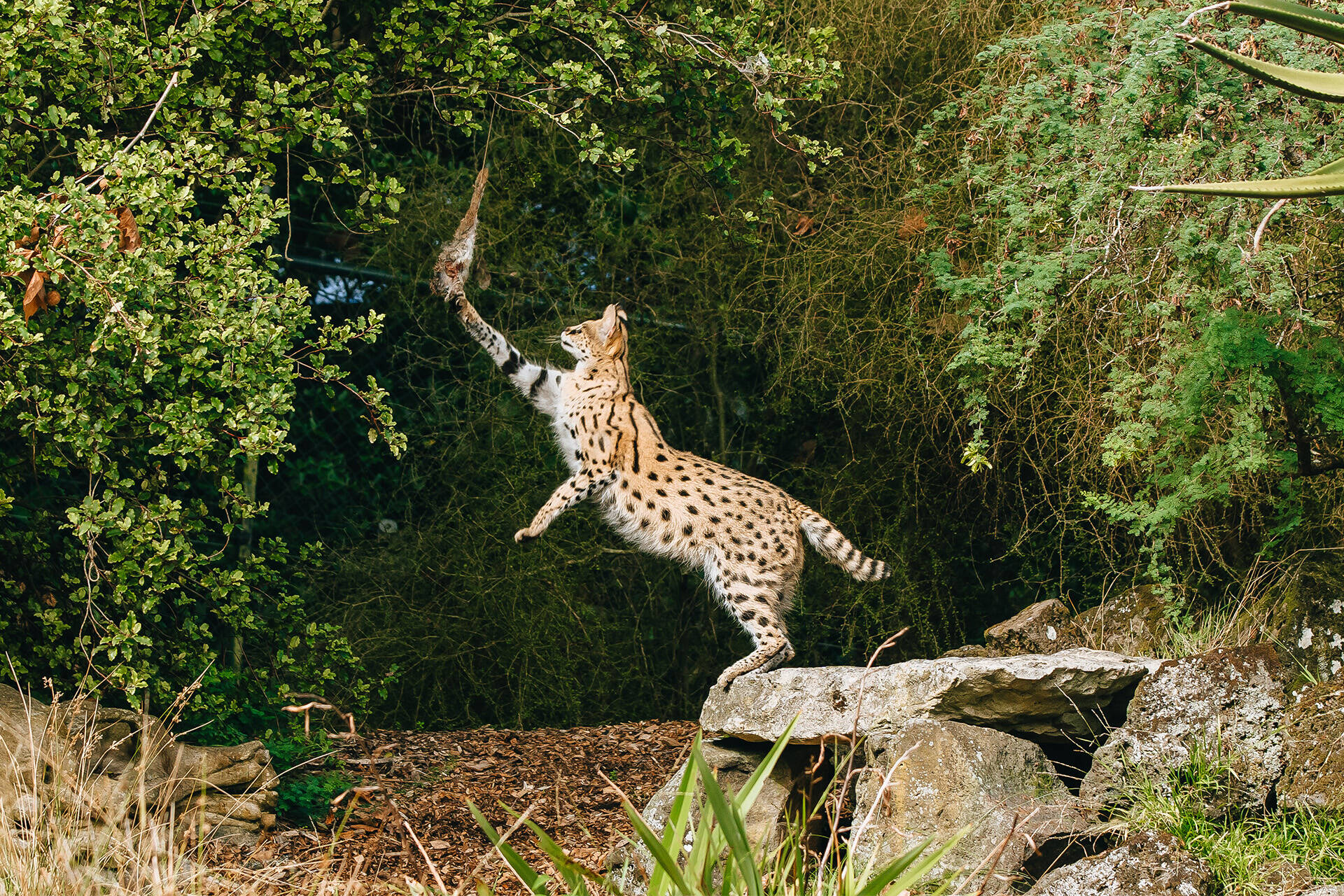All the better to hear prey with!
One of the first things you may notice about a serval is their large ears. Servals have extremely sensitive hearing. They can even hear a rodent in its burrow underground! But they are not only on the lookout for rodents like mice and rats. Servals will also occasionally hunt birds, young antelope, lizards and insects.
Servals are mostly solitary. They mark their territories by spraying urine and scratching the bark of trees. They will also communicate to other servals with shrill cries, growls and purrs.


